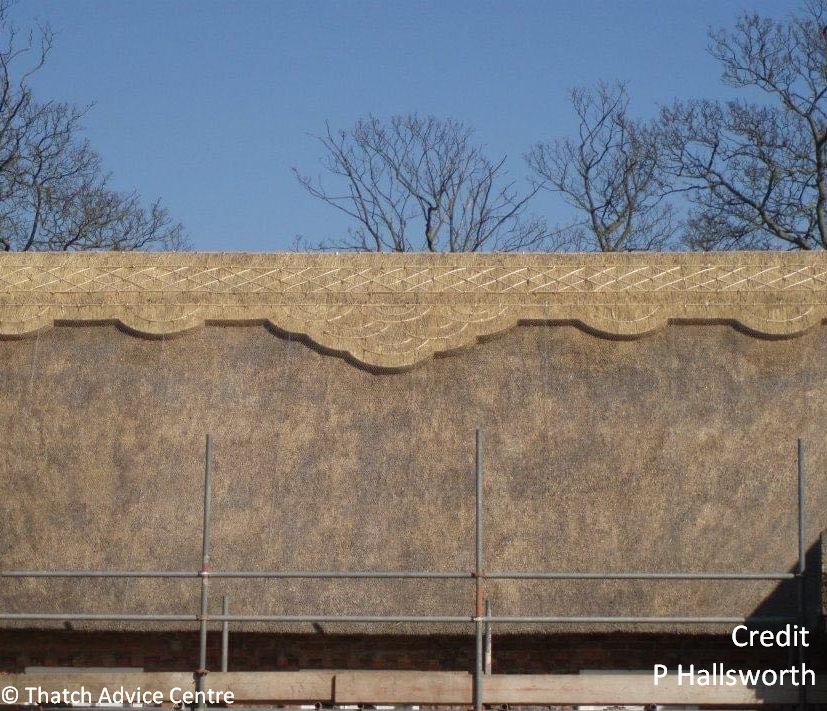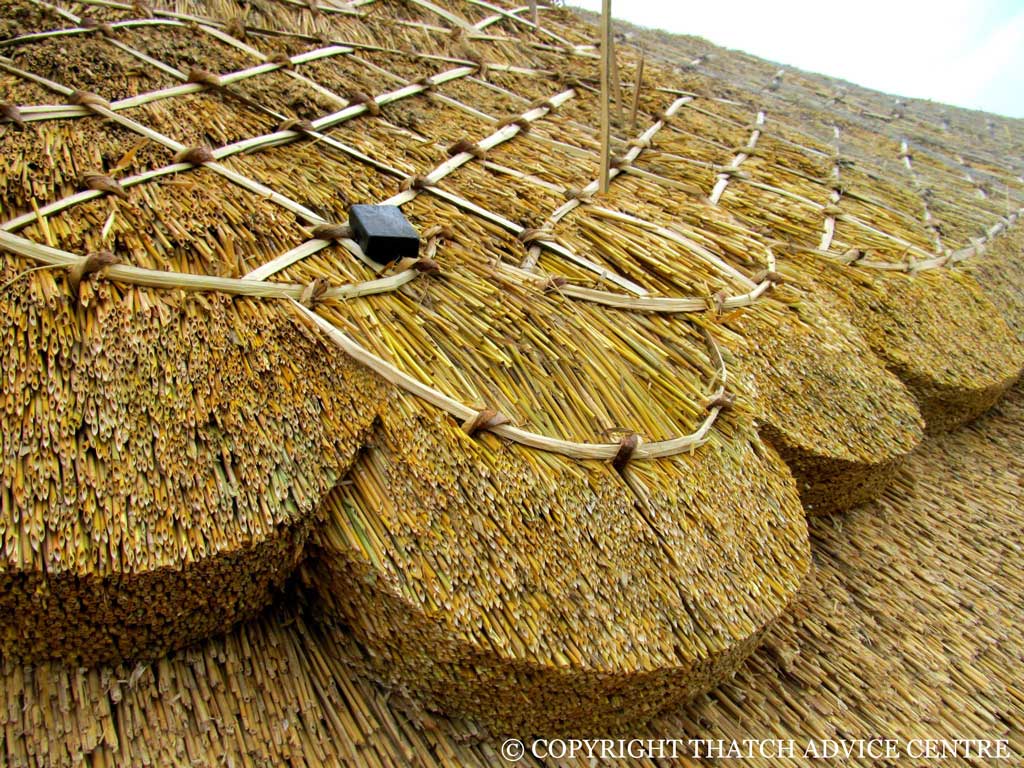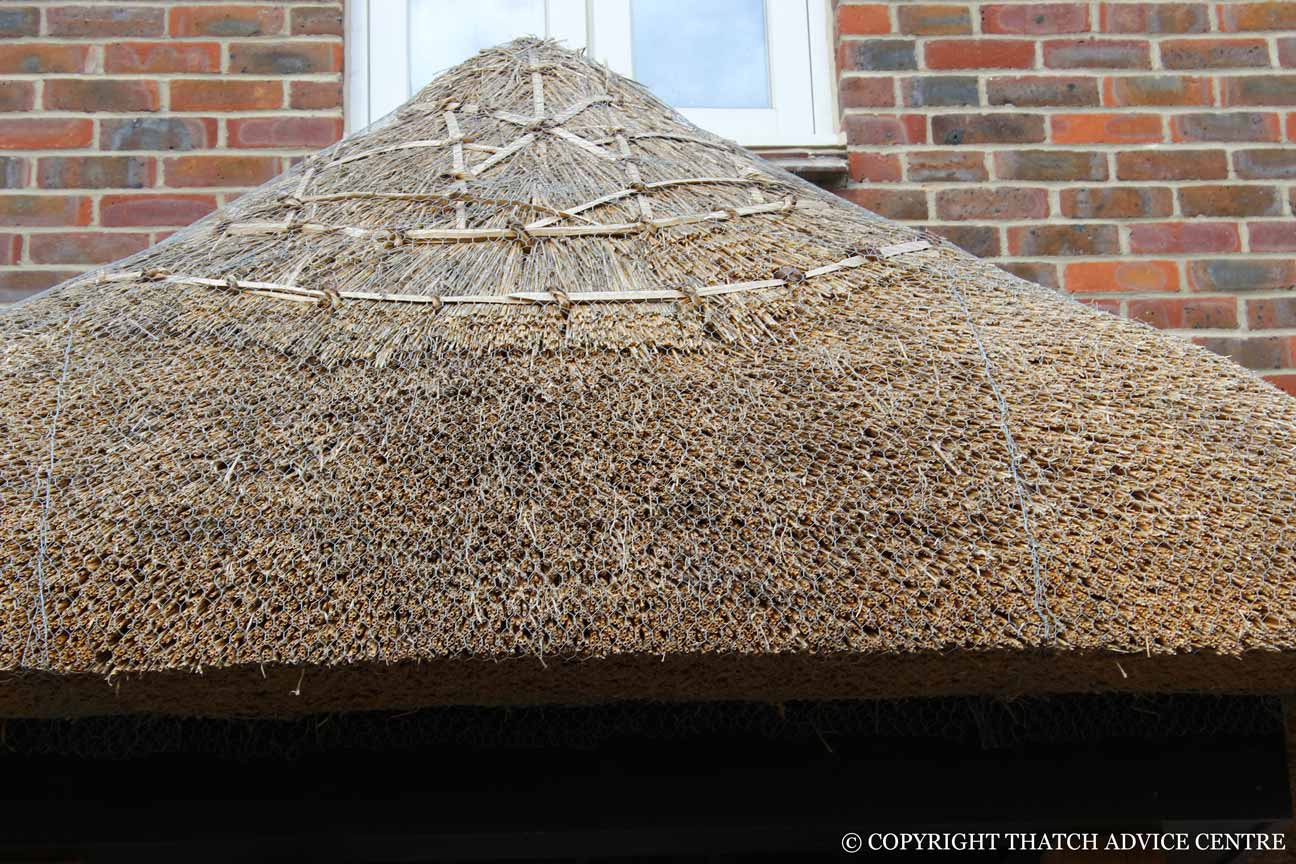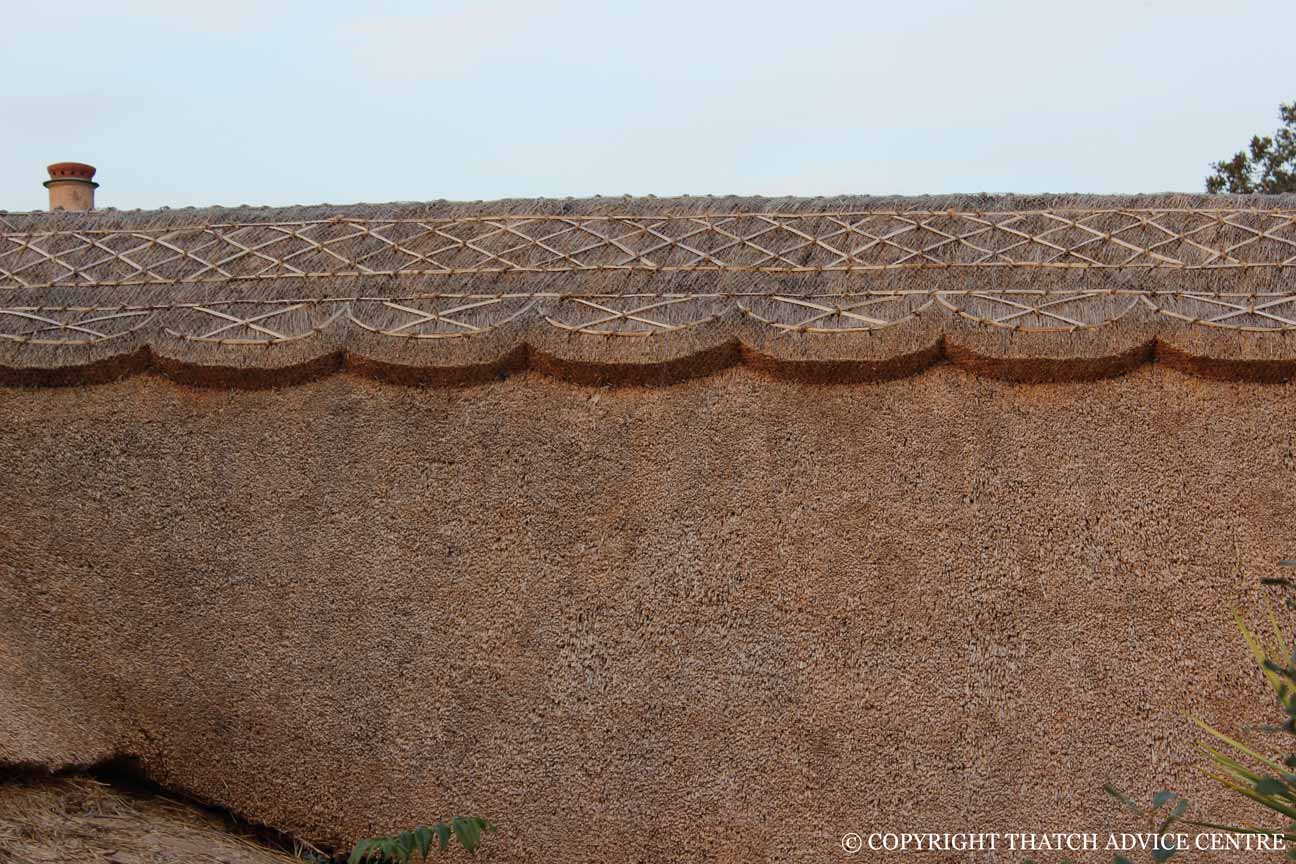The ridge is the top section of the roof which provides protection. The style of the ridge thatching and patterns can vary often depending on the material, local tradition or customer choice. Listed thatched buildings require thatch to be maintained “like for like” with the same style and pattern as previously otherwise listed building consent will be required in order to change from one ridge type to another.
Types of Ridge
Block Ridge
A block ridge is one where a block of thatch is put on top of the roof, usually about 4 inches thick. This may be a straight cut ridge or a patterned (ornamental) one. Ornamental can be scallops, diamonds or anything where the cut can give an upstand. The ridge at the top of this page has an excellent design.
Flush Ridge
A flush ridge may also be called a turnover, wrapover or buttup ridge. These ridges, as described, are flush with the main coatwork and are usually decorated with a spar pattern. Flush ridges are commonly associated with Longstraw roofs but may be applied to any roof if desired (exception being a listed property with an existing block ridge which would require listed building consent for any change).
Ridging Materials
Whilst most thatched roof coatwork is Straw or Water Reed, the ridges are usually done in straw. This could be wheat, rye, hybrid like Tricale or oat straw. Heather, sedge and turfs have also been used for ridging. In Europe they use clay tiles for ridging on top of thatch which gives a very different effect.





